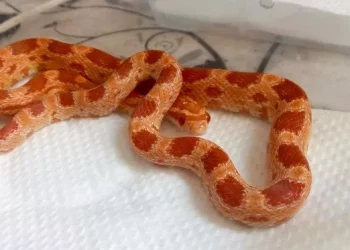When it comes to setting up an aquarium for the first time, many new hobbyists are often drawn to cichlids due to their vibrant colors and captivating personalities. Among the various types of cichlids, the Ram Cichlid, specifically the German Blue Ram (Mikrogeophagus ramirezi), is a popular choice for those just starting out. But the question remains: are Ram Cichlids good for beginners? In this article, we will explore the characteristics, care requirements, and challenges associated with keeping Ram Cichlids, helping you decide whether they are suitable for your first aquarium.
Understanding Ram Cichlids
Ram Cichlids, known for their small size and beautiful coloration, are native to the warm waters of South America, specifically the Rio Orinoco and Rio Guainía in Venezuela and Colombia. Their natural habitat is characterized by slow-moving rivers and waters that are rich in organic matter, often surrounded by dense vegetation. This environment plays a role in shaping their behavior and care requirements in captivity.
German Blue Rams, the most common variety, are famous for their striking blue and yellow hues, with males often exhibiting more vivid colors compared to females. These fish also display some interesting behaviors, including territoriality and a social nature, which makes them fascinating to watch.
Are They Good for Beginners?
In order to determine if Ram Cichlids are good for beginners, we must first understand their needs in terms of water conditions, tank setup, diet, and social behavior. This will help us assess how easy or difficult it is to meet their requirements, especially for those who are new to the aquarium hobby.
1. Water Parameters
One of the key factors to consider when keeping Ram Cichlids is the water conditions they require. Unlike many fish, Ram Cichlids are quite sensitive to changes in water quality, which can make them a bit challenging for beginners who are still learning how to maintain stable tank conditions.
Water temperature: Ram Cichlids thrive in water temperatures between 78°F and 84°F (25°C to 29°C). This is typical of the tropical conditions of their natural habitat, and beginners need to ensure they have a reliable heater to maintain consistent warmth in the tank.
pH level: These fish prefer slightly acidic to neutral water with a pH between 6.0 and 7.5. They are not well-suited to hard, alkaline water, which can stress them out and lead to health problems. For beginners, this means monitoring pH levels regularly and possibly using special water treatments if you live in an area with hard water.
Water hardness: Ram Cichlids do best in soft to moderately hard water, with a hardness level ranging from 4 to 15 dGH (degrees of general hardness). Soft water is typically preferred because it mimics the fish’s natural environment, where the water is rich in dissolved organic materials. Beginners will need to monitor hardness levels and adjust accordingly, possibly with water softening products.
Maintaining these specific water conditions can be more challenging for beginners who may not have developed a keen understanding of how to test and adjust water chemistry. This makes Ram Cichlids somewhat more difficult than other species that are less sensitive to water quality.
2. Tank Size and Setup
Ram Cichlids are small fish, typically growing to about 2 inches (5 cm) in length. As such, they don’t require an overly large tank, but they do need plenty of space to swim and explore. A tank size of at least 20 gallons (75 liters) is recommended for a small group of Rams, as it gives them enough room to establish territories and reduces the risk of aggression.
While the size of the tank is manageable for beginners, setting up an ideal environment for Ram Cichlids requires more than just a large enough space. The tank should be well-planted with soft, live plants and have plenty of hiding spots, as Rams can be shy and appreciate a peaceful, protected environment. Decorations such as rocks, driftwood, and caves are ideal for providing shelter. Beginners should also use a filter with a gentle flow, as Ram Cichlids prefer slow-moving waters, which helps reduce stress.
Another important consideration for tank setup is the water’s oxygenation. Ram Cichlids are sensitive to low oxygen levels, so it’s crucial to provide proper aeration through a filter or air pump. While this may not be overly complicated for beginners, it’s essential to remember that these fish do best in tanks that have a stable, well-maintained environment.
3. Feeding
Ram Cichlids are omnivores, and their diet in captivity should consist of a combination of high-quality flake foods, pellets, and live or frozen foods such as brine shrimp, daphnia, or bloodworms. They enjoy variety in their diet, which not only keeps them healthy but also brings out their natural colors.
Feeding Ram Cichlids is generally straightforward, but beginners should be cautious not to overfeed. Overfeeding can lead to water quality issues, as uneaten food breaks down and pollutes the tank. To avoid this, it’s important to feed them small portions that they can consume within a few minutes, twice a day.
Because these fish are small and delicate, it’s crucial to ensure they get proper nutrition without overfeeding, which is a common challenge for beginners.
4. Tankmates
Ram Cichlids are generally peaceful fish, but they can be territorial, particularly during breeding. They may show aggression towards other fish that invade their space, especially other cichlids or any fish that looks similar to them. Therefore, it’s important to choose tankmates wisely. Suitable companions for Ram Cichlids include peaceful species such as tetras, rasboras, or small catfish.
However, beginners should be cautious when introducing new fish into the tank. Some aggressive species or overly active fish may stress out the Rams, potentially leading to health issues. Therefore, it’s essential to research the temperament of other species before introducing them to the tank.
Additionally, male Ram Cichlids may exhibit some aggression towards other males, especially in smaller tanks. Beginners should consider keeping only one male with multiple females to help minimize territorial disputes.
5. Breeding
Ram Cichlids are known for their interesting breeding behaviors. They are not difficult to breed under the right conditions, and many beginners are excited by the prospect of raising their own fish. When they breed, the female lays eggs on flat surfaces such as rocks or plants, and both parents take turns guarding the eggs and keeping them clean.
However, breeding Ram Cichlids comes with its own set of challenges. The parents can be very protective, and if they feel threatened, they may become aggressive, which can lead to conflicts with other tankmates. Also, once the eggs hatch, the fry (baby fish) require very specific care, including specialized food and protection from adult fish that may see them as prey. For beginners, breeding may require more attention and experience than simply maintaining a healthy tank.
6. Common Health Issues
Although Ram Cichlids are generally hardy fish, they are prone to certain health issues, particularly if the water conditions are not properly maintained. Some of the most common problems include:
- Ich (White Spot Disease): This is a parasitic infection that manifests as small white spots on the skin, fins, and gills. It is often caused by poor water quality or stress, and beginners need to act quickly to treat the fish by raising the water temperature and using a medicated treatment.
- Fin Rot: This bacterial infection causes the fins to fray or deteriorate, often as a result of poor water conditions or injury. Regular water changes and maintaining good water quality can help prevent this.
- Swim Bladder Disease: This condition can cause the fish to have trouble swimming or maintaining buoyancy. It is often caused by overfeeding or improper diet, and may require dietary adjustments or medication.
Beginners should be vigilant in observing their fish for signs of illness and be ready to take action quickly. Learning to spot the early symptoms of common diseases and knowing how to treat them can be a challenge for newcomers to the hobby.
Final Thoughts
Ram Cichlids are undoubtedly beautiful and fascinating fish, but they do come with some challenges that may make them less ideal for absolute beginners. Their sensitivity to water quality, specific temperature and pH preferences, and territorial behavior require a level of attention and experience that beginners may not yet have developed.
However, with proper care, patience, and attention to detail, Ram Cichlids can be a rewarding addition to an aquarium. For hobbyists who are committed to learning about water chemistry, maintaining a stable tank environment, and selecting suitable tankmates, Ram Cichlids can thrive and offer an engaging experience.
For beginners who are still learning the basics of aquarium care, it may be wise to start with more resilient fish species that are less sensitive to water conditions. Once a beginner has gained experience with water quality management, temperature control, and feeding routines, they can consider adding Ram Cichlids to their tanks.
In conclusion, while Ram Cichlids can be a wonderful choice for aquarists who are ready to meet their specific needs, beginners may find them to be a bit more demanding than other species. With the right preparation and dedication, however, these fish can bring color, life, and excitement to any aquarium.
Related Topics:























